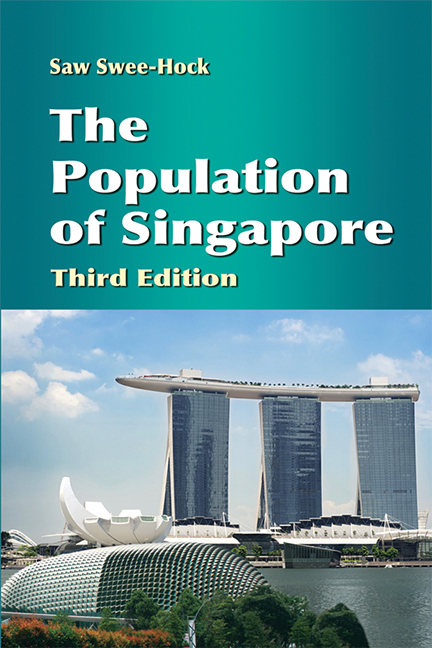Book contents
- Frontmatter
- Contents
- List of Tables
- List of Figures
- Preface
- Preface to Second Edition
- Preface to Third Edition
- 1 Background
- 2 Population Growth and Distribution
- 3 Changing Population Structure
- 4 Migration
- 5 Mortality Trends and Differentials
- 6 Marriage Trends and Patterns
- 7 Divorce Trends and Patterns
- 8 Fertility Trends and Differentials
- 9 Family Planning, Abortion and Sterilisation
- 10 Fertility Policies and Programmes
- 11 Immigration Policies and Programmes
- 12 Labour Force
- 13 Future Population Trends
- Appendix
- Bibliography
- Index
11 - Immigration Policies and Programmes
Published online by Cambridge University Press: 21 October 2015
- Frontmatter
- Contents
- List of Tables
- List of Figures
- Preface
- Preface to Second Edition
- Preface to Third Edition
- 1 Background
- 2 Population Growth and Distribution
- 3 Changing Population Structure
- 4 Migration
- 5 Mortality Trends and Differentials
- 6 Marriage Trends and Patterns
- 7 Divorce Trends and Patterns
- 8 Fertility Trends and Differentials
- 9 Family Planning, Abortion and Sterilisation
- 10 Fertility Policies and Programmes
- 11 Immigration Policies and Programmes
- 12 Labour Force
- 13 Future Population Trends
- Appendix
- Bibliography
- Index
Summary
The national population policies in Singapore have been dominated by fertility policies in the form of antinatalist measures commencing from the mid-1960s and postnatalist measures from the 1980s. The recent recognition that, despite the introduction of a comprehensive postnatalist policy, fertility will never return to replacement level to sustain the population size in the future has resulted in a big shift in the national population programme towards immigration as the key answer to replenishing the population in the years ahead. Not surprisingly, immigration rules have been expended and relaxed to attract foreigners, especially professionals and businessmen, to re-locate to Singapore and become permanent residents. Citizenship laws and procedures have also been liberalised to make it easier for those who have became permanent residents to take up Singapore citizenship by naturalisation. By and large, the various schemes designed to lure foreigners to work and settle in the country resulted in a surge In the foreign population and, consequently, frequent grumbling about the city-state becoming too over-crowded. Lately, some of the rules meant to attract foreigners have been tightened.
IMMIGRATION LAWS
It may be recalled that up to December 1942 Singapore and Peninsular Malaysia were considered as a single unit in matters concerning migration under the British colonial rule and various legislations were in force to control different classes of immigrants from China, the Indian sub-continent, and other countries. During the Japanese Occupation, which lasted until September 1945, the flow of immigrants into the two territories was completely halted, although there was some internal movement of people between them. The end of the Japanese Occupation brought migration under the jurisdiction of the British colonial rule once again, but the changing social and economic environment in the early postwar years necessitated a complete reappraisal of the whole issue of migration.
In the early post-war years, there was no attempt to revive any of the previous systems of encouraging immigration into the country. The only legislation available was the Aliens Ordinance 1893 which could still be employed by the Immigration Department to regulate the entry of aliens, particularly those from China.
- Type
- Chapter
- Information
- The Population of Singapore , pp. 252 - 270Publisher: ISEAS–Yusof Ishak InstitutePrint publication year: 2012



